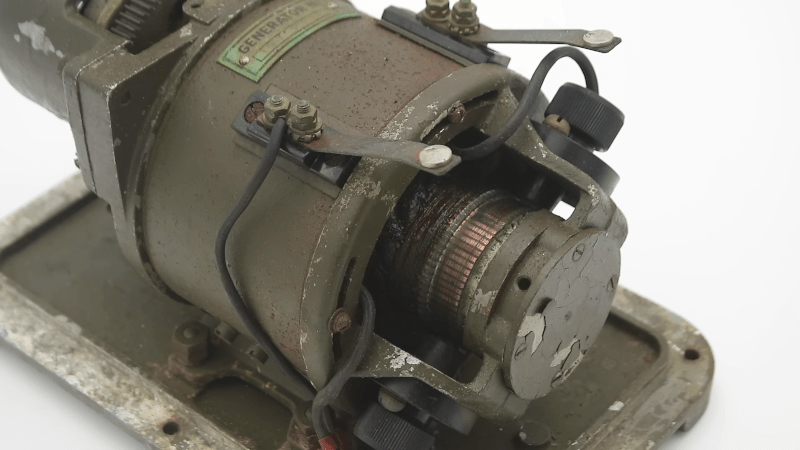If you’ve ever watched a cartoon where something blows up, you’ve probably seen a detonator — the device with a plunger that, when you push it, some dynamite blows up a bridge or a building or whatever. Detonators may be common in cartoons, but they are very real, and [Our Own Device] talks about some vintage detonators and, along the way, gives a brief history of explosive compounds.
For many years, black powder — a low explosive — was the only game in town. But a flurry of scientific advances brought a new class of high explosives far more powerful than gunpowder. The story of antique explosive factory safety measures, and lack thereof, is also an interesting side detour.
We enjoyed the trip down memory lane. However, if you want to skip the history lesson, jump about 17 minutes in to get a better look at the hardware. The teardown follows soon thereafter. These boxes are built solidly and have many safety features to prevent accidental detonations. One is a dynamo device with some clever mechanisms to ensure that the unit produces enough voltage, the other uses a charged capacitor.
Our usual interest in pyrotechnics is usually aimed more at fireworks. You think of explosives as having an imprecise effect, but that isn’t necessarily the case.















Do modern detonators still use the fun push-down T-shaped handle? If not then what is the point
Nope, most now are electronic with a charge button and a fire button. Pushing charge charges up a capacitor and when the fire light comes on then press fire. Not nearly as much fun as Wile E Coyote had in the day.
hackaday project: adapter board that interfaces a classic dynamo detonator to a modern firing solution. Dangerous, unwise, niche, unneeded, technically challenging, everything a proper hackaday project needs.
I can imagine the look on the feds’ faces when they pull up this guy’s browser history. I also love the idea of one legged stools so workers pay attention and don’t doze off.
Growing up we had one legged milking stools.
The milker’s legs provided the remaining support.
Basically it was T-shaped, made with 3×3 lumber, and a rubber strap cut from an old inner tube for a carry handle.
I know these things from the classic Roadrunner cartoons..
However, I didn’t know these devices were called “detonators” in English.
Why is this so? They’re not detonating, after all. I thought a detonator was the thing on the other end of the wire, the capsule that explodes or the electric contact that sparks. A term like “ignition starter” (made up) makes more sense to me. Or is “detonator”, by any chance, an US English term? Did BE use a different one, maybe? Please forgive my ignorance. 😟
Yeah I was thinking it was a blasting cap or a detonator (usually called the fuse) that was placed in a 1000lb bomb or something.
You are quite correct. The initiator at the operators end is called an “Exploder, Shot Exploder, or Blasting Machine”, (not a detonator).
I’m a retired Master Explosive Ordnance Disposal technician. You are correct that “detonator” is the wrong word for what he is describing. The author probably would have done a better job if he just used Chat GPT.
I’m looking forward to Part 2 where they explain why time bombs in movies always have a time-to-detonation display and why they use seven segment LEDs that are at least four inches high (pricey!).
On reflection, maybe it’s because if the bomb had a split-flap or nixie tube display, the FBI would have been able to trace it back to a Hackaday userid… :)
They are all listed in “Jane’s All The World’s Bombs”, along with which color wire to cut first.
Great stuff.
My favorite is Alec Guinness in “The Bridge on the River Kwai” falling on the detonator handle.
The 2nd unit does not have a voltage doubler. It uses an auto-transformer and a single diode (schematic @25:15).
Some of the older (detonators) could set off the charge if you lifted the handle fast enough.
Yeah, that’s the ticket.
Fireworks…
also:
I didn’t do it.
The check’s in your mouth.
I would never ever cum in your mailbox.
Other fun high explosives are also the simplest – Sprengel explosives, of which oxyliquits were a sub-class. Mix carbon or a hydrocarbon with a slug of liquid oxygen, put it in the hole and stand well back.